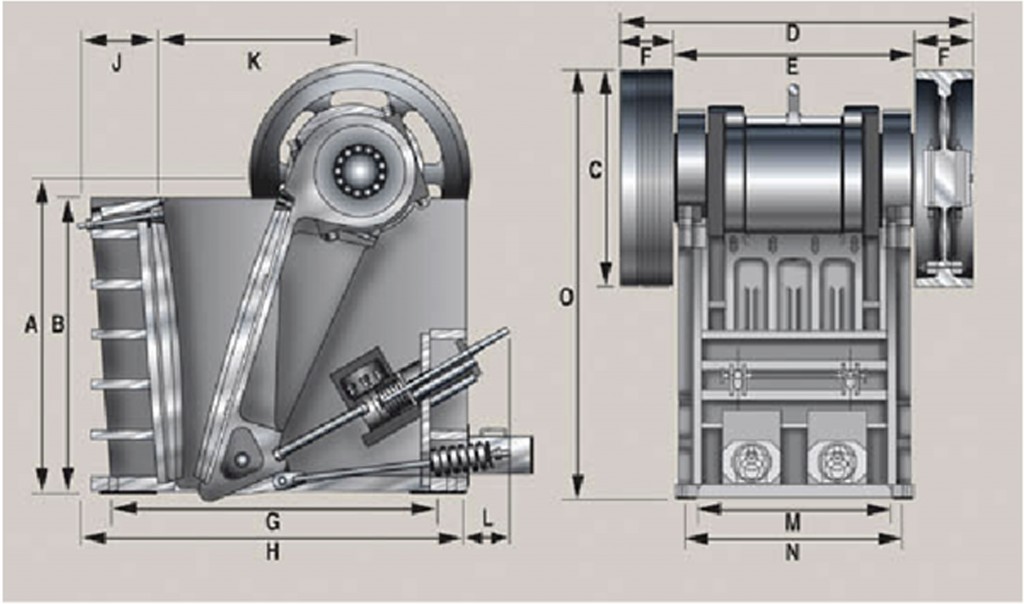Hi Bill, I think Gary Gilmore has one of the simplest grinder and screen classifier set ups around.
Bob
That one is a pretty good one. It depends on how much you are planning to do. If you are going to do a lot, I would feed it into a trommel or another screen so you don’t have to handle it as much. If you are just experimenting, it isn’t worth the money or effort to build something too complicated just to collect dust in the shed. .
Yes that’s the one I was talking about. Very simple. You have the gear reduction motor, then you are set to go.
Bob
I built on per Gary’s design and it worked very well. I did put a trough just above and to the side of the grinder so I could dump a bucket full into the hopper, and then hand push it into the grinder. I used a variable speed drill to drive mine. One hand feeding the grinder and one hand regulating the speed of the drill. TomC
Thanks Don. Through this video I found a couple of more videos you had mad that I hadn’t seen— All of them were great. TomC
Thanks Don.
Do you have a walk around video or a build on this?
Hey, I have been giving some thought to the idea of building a jaw crusher, and figured I would run my idea past you all. Since charcoal is fairly brittle, I am thinking it could be constructed out of 2x6 sandwiched between some 3/4 plywood. One face would be fixed, the other spring-loaded and with a hinge at the bottom. the drive mechanism would be a shaft with an oblong cam (or two so you got 2 strokes per revolution). I really want to make something that could be hand cranked or hooked to a bike, but i wonder if this system would be too slow. Also, it does seem like it would probably need a flywheel of some sort.
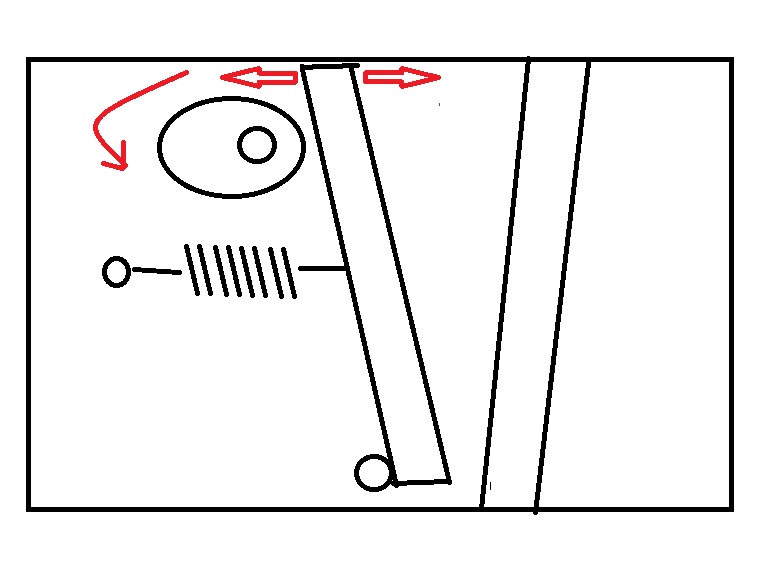
I am wondering about how much travel the jaw should have, and how big the outlet should be. Any thoughts?
From what I’ve seen, you want the movable jaw to go up and down at the direction it is angled. So rather than it pivoting at the bottom, have it slide a 1/2". I thinkyou can use a pipe welded offset to a rod at the top to make it slide.
Watch the video of the jaw crusher above in this topic. You will see that you need to reverse the pivot and the cam on your sketch. Pivot at top and cam on the bottom.
How does it get around letting less then 3/4 diameter though but like 6" in length?
Yep, if Carl doesn’t add some inter woven teeth like those in the rock crusher, he will have some long skinny pieces that will have to be further processed.
I’m thinking along similar lines, I’ve been looking at videos and info I can glean online.
My approach will be to faithfully copy the geometry and movement of the proven industrial designs. They seem to be very consistent, and I’m sure there’s good reason behind that. As for stroke, I don’t think it will take much, maybe 1/4" for a small machine. I’m considering building with 3/4" plywood, reinforced the same as the welded steel construction.
Here’s a couple of plan views:
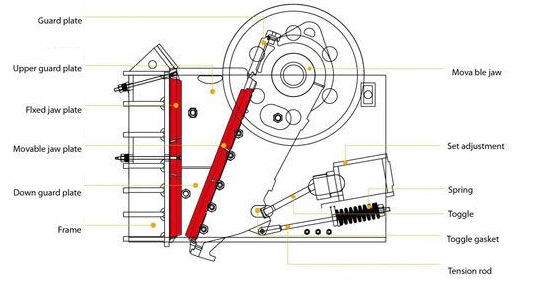
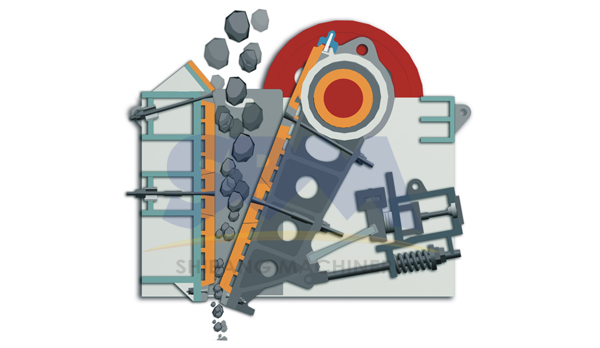
For flywheels, I would probably use cast concrete discs, or torched out steel plate, a charcoal crusher won’t need a pile of power to cycle, the work is relatively light. But it will need some flywheel effect.
Hi all, The idea of a rock crusher design to size charcoal sounds good BUT…I made one several years ago and it did not work. The charcoal was crushed as it moved down through th"e jaws, but then it just stayed there. Seems the charcoal jammed between the long teeth of the crusher and there it stayed just plugging it up. My jaws were made from 1/2" square steel about 6 inches long. These were arranged on an anvil (the stationary plate) in parallel and seperated by 1/2". The moving part had steel strips that were 1/4" by 1/2" by 6" The 1/4" portion of this arrangement was designed to have it go between the 1/2" square bars. I gave this thing about 10 minutes of my time before realizing it would not work and tossed it. With that said, I hope someone else gives this style of crusher a try. Hopefully they will have a better experiance than I did 
Gary in PA
Do you have pictures of the jaws? I was thinking of welding angle iron on a steel plate.
Also, did it just pivot at the bottom or did it slide up and down?
Hey Gary, always good to hear from someone who has gone ahead and tried a method out. I am trying to picture your crushing teeth.
Looking up at the bottom of the machine I would expect to see something like this (If I am picturing it right).
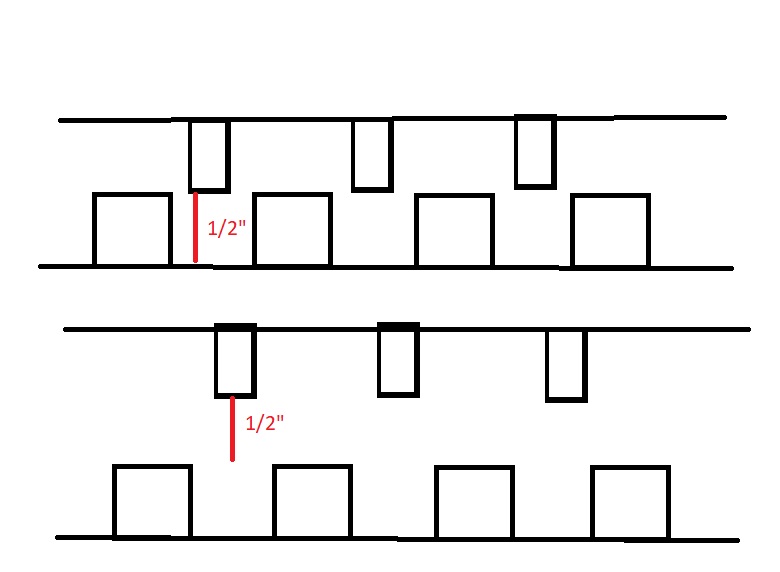
What I am wondering is did you leave a gap between the crushing edges (bottom diagram), or was the only space for charcoal to drop through in between the 1/2" square stocks like in the top diagram?
Bill, that seems like a smart way to get V-shaped teeth, which would not create a slot where charcoal could be jammed in.
With a rock crusher I would imagine that the V-profile also helps to concentrate the force on a much smaller surface, which I am not sure is going to be as much of a factor for crushing something as brittle as char.
Also, a quick bit of reading about the geometry of how these things work turned up that there are basically 2 designs, one hinged at the top (Blake) and one that hinges at the bottom (Dodge). They both use an eccentric shaft, which would impart some up-and-down motion. (I am not really sure how you would easily fabricate that, though). The other tidbit that was interesting was that the Dodge crusher designs have the least travel at the outfeed end, due to the proximity of the pivot. This leads to better uniformity, at the cost of greater chance of it getting jammed. Seems like a Blake design might be the best choice for charcoal.
It seems that the vertical motion would be needed to counteract the “dead spot” that would form just opposite the pivot point. By lifting and lowering that zone of minimal movement, the pieces would not be able to just hang out there.
Anyone have any clever ideas on how to add that eccentric motion without an oval shaft?
As I mentioned above, I am going to weld a slightly larger pipe (enough for 1/2" travel) offset on a rod
Something like this?
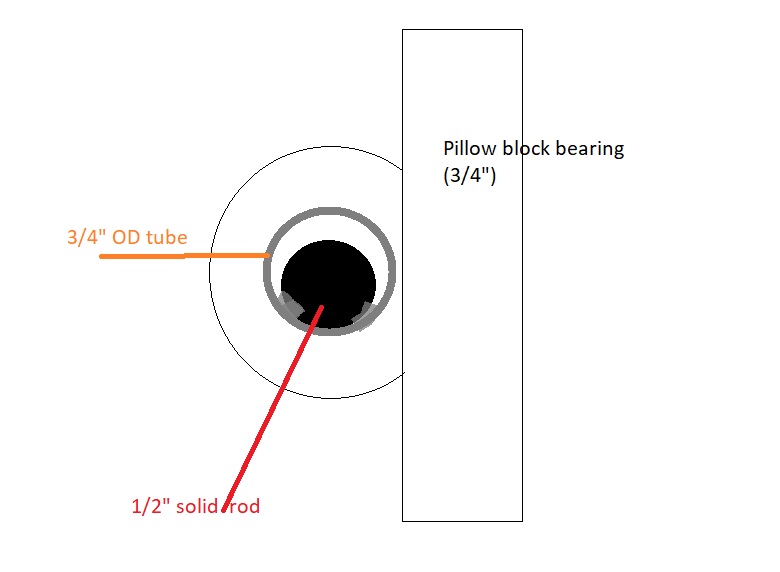
That seems like an elegant solution. It wouldnt hold up to breaking granite, but I suspect it would be more than enough strength for charcoal. You could even shore it up a little bit by welding on a cap.
Any thoughts on how to make a simple toggle?


